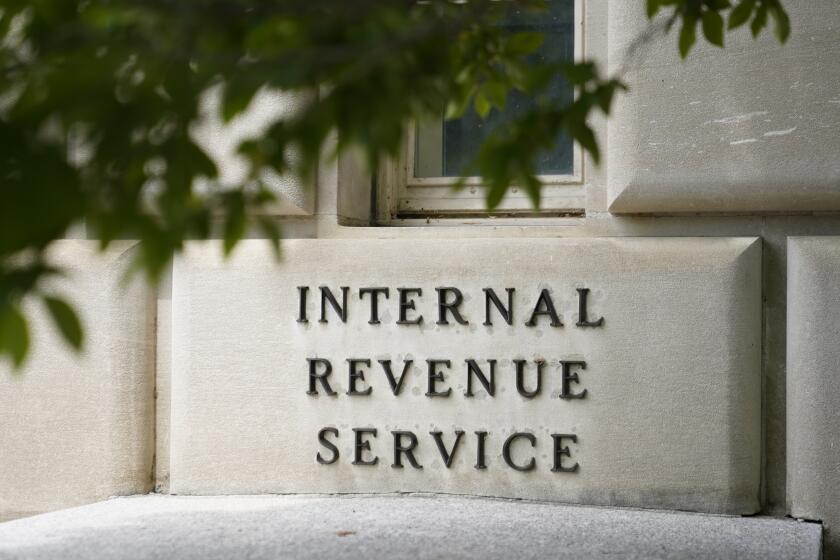Energy bill could alter electricity rates for millions in California
- Share via
SACRAMENTO — California lawmakers are poised to pass legislation that could dramatically affect bills for millions of residential customers of Southern California Edison Co. and other state-regulated utilities.
People living in temperate climates along the coast would probably see higher bills. Those in torrid regions — the San Joaquin Valley, the Inland Empire and the Mojave Desert — would get some rate relief.
Exactly how much rates would change would be left to the Public Utilities Commission after it conducts a detailed, technical investigation. Additionally, the PUC would have the authority to charge all ratepayers a fixed monthly fee of up to $10 each.
The legislation also would authorize the PUC to rewrite rules for solar power users selling excess power back to the grid and to require utilities to generate even more electricity from wind, solar and other renewable sources. The state now requires utilities to get 33% of their power from renewable sources by 2020.
The proposal would replace “outdated, electric-rate restrictions adopted during the state’s energy regulation crisis over a decade ago,” said its author, Assemblyman Henry T. Perea (D-Fresno).
The much-amended legislation has remained under the radar for most of the year as investor-owned electric companies wrangled with consumer groups, roof-top solar-power companies, environmentalists, manufacturers and farmers over half a dozen complex elements that affect rates.
But now it has emerged as the year’s major energy initiative, passing the state Senate on a 33-5 vote Monday after clearing the Assembly on a 66-4 vote in May. AB 327 faces one more largely procedural vote in the Assembly before being sent to Gov. Jerry Brown for his signature, which is expected.
The Perea bill is California’s first comprehensive effort to rejigger rates since the lowest two pricing tiers were frozen during blackouts and rolling brownouts that affected the state’s electrical grid in 2000 and 2001. Lower tiers cost less per kilowatt-hour than the higher ones.
But the freeze on some retail rates didn’t shelter utilities from the rising costs of wholesale power, generation, transmission and renewable energy, according to Edison, Pacific Gas & Electric Co. and San Diego Gas & Electric Co.
Those costs mainly have been heaped on larger-volume consumers, whose bills are boosted by heavy, high-tier usage.
Owners of large homes with swimming pools, lighted tennis courts and a dozen television sets got hit. So did folks of more modest means, particularly those with low incomes and the elderly, who tend to live in hotter inland cities where temperatures often hit triple digits on summer days.
“The rates discriminate heavily against seniors who live ... in houses where energy use is high,” said Gary Passmore, vice president of the California Congress of Seniors. “They pay disproportionately.”
Though the measure sets certain parameters, it directs the PUC to come up with specific economic and energy regulations.
“The bill is a good package that allows the commission flexibility it needs to set rates going forward. It also includes significant ratepayer protections,” said Mike Campbell, a program manager with the Division of Ratepayer Advocates, the commission’s independent watchdog arm.
The measure is backed by the three utilities, consumer groups such as the Utility Reform Network and the Greenlining Institute, the AARP and other senior citizens groups, the California Retailers Assn. and the national Solar Energy Industries Assn., among others.
Opponents include the Sierra Club, the California Manufacturers & Technology Assn. and the California League of Food Processors.
Manufacturers said they feared that raising the renewable target could make California’s already high electric rates even higher. Farmers and growers, who invested in expensive solar power equipment, worried that they could be shortchanged by a shift in the rules for earning credits for excess power.
The Sierra Club objected to a provision that would allow the PUC to charge the $10 fixed monthly fee for maintenance of the grid.
The fee, said Kathryn Phillips, the club’s state director, “has no real purpose other than to discourage investment in roof-top solar and energy efficiency” by lengthening the time needed to reap a payback from their expensive renewable systems.
Edison argued that the charge is an equitable way to make sure that everyone who uses the grid, including people who get most of their energy from roof-top solar, pay a portion of the fixed costs of maintaining thousands of miles of transmission and distribution lines.
Twitter: @marclifsher
More to Read
Inside the business of entertainment
The Wide Shot brings you news, analysis and insights on everything from streaming wars to production — and what it all means for the future.
You may occasionally receive promotional content from the Los Angeles Times.











